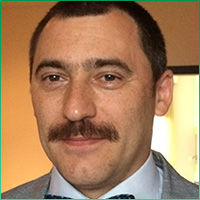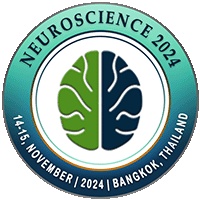
Tashlykov Vadim
Sheba Medical Center, IsraelTitle: Neuromodulation in chronic pain control. Evolution and look into the future
Abstract
Neuromodulation is defined as an alteration of nerve activity through targeted delivery of a stimulus, such as electrical stimulation or chemical agents, to specific neurological sites in the body. Long period of time the term neuromodulation was associated with different kinds of peripheral stimulation. Interventional neuromodulation for pain, such as spinal cord stimulation became possible after the introducing of the Gate theory of pain by Patrick Wall and Robert Melzack in 1965. The first SCS implantation was done by CN Shealy in 1967. It was subdural lead implantation for severe neuropathic pain in oncologic patient. The electrode was explanted after three days because of infection, but showed great effectiveness for pain decrease. During last 65 years this kind of neuromodulation evolved a lot in every possible aspect:
- Understanding basic mechanisms
- Targets of stimulation
- Hardware
- Implantation techniques
- Software and algorithms
- Waveforms
- Clinical approaches and indications
It has appeared that gate theory can explain the effectiveness of spinal cord stimulation only partially. It was shown that different neuromediator systems are involved in the effect. SCS can make down regulation of excitatory systems and up regulation of inhibitory systems. So, the effect of SCS on chronic pain is mediated by antidromic activation of segmental inhibitory circuitry and orthodromic activation of circuitry in the brainstem, resulting in descending inhibition. The effect of SCS on sympathetic system make it possible to put spinal leads for ischemic pain in limbs end chronic angina pectoris.
The first spinal cord stimulator device involved a bulky, non-rechargeable external pulse generator connected to a percutaneously placed electrode. The system had a short battery life and limited range of stimulation. The next evolution in SCS came in the 1980s when programmable spinal cord stimulation systems were introduced. The devices were implanted into the body and could be programmed with frequencies and intensities that could be adjusted by the patient to manage their pain. As technology advanced, newer devices became more compact, long-lasting, and more convenient to use. The procedure itself became shorter and simpler, it could be done in percutaneous way and does not need general anesthesia.
In the last decade, there has been a great advancement in the development of newer and more advanced spinal cord stimulation devices. These devices allow more precise targeting of the pain site, more accurate control of the stimulation, and the ability to capture data to better understand the patient's pain patterns.
In addition, the new stimulation waveforms and new stimulation protocols have increased the efficacy of SCS, making it an even more effective therapy for chronic pain. These options include burst, 10k, CONTOUR, FAST, DTM, providing more options for patients with a variety of pain conditions. Auto-regulated closed loop systems can improve the way of stimulation, decrease habituation, and improve the effectiveness during time.
Furthermore, there have been significant improvements in battery technology that allows for rechargeable and wireless devices, making the patient’s life more manageable, safe, and comfortable. New IPG-free systems were introduced to the market.
SCS could not be effective in every situation. So, it made possible to develop new kinds of neuromodulation: peripheral nerve stimulation, field stimulation and DRG stimulation. Current understanding in technology made it possible to use SCS in rehabilitation medicine.
In conclusion, spinal cord stimulation has come a long way since it was first introduced in pain management. The evolution has been gradual, with each new device bringing sound relief to patients with chronic pain. We hope future innovations in spinal cord stimulation will continue to provide better pain management to patients and help to cope with chronic pain.
Biography
TBA

